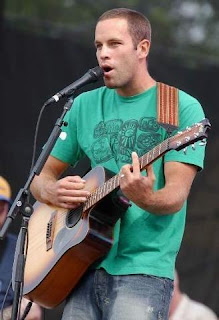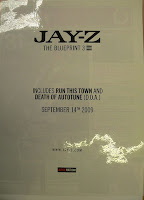In what ways does your media product use, develop or challenge forms and conventions of real media products?
Our media product conveys the main conventions of real media products of the same genre. We researched into magazine adverts, DVD covers and other music videos using the internet and the ‘YouTube’ website in particular to form an understanding of our track genre which was ‘Indie’ and discovered the main conventions that they portrayed. We particularly focused and looked at Paolo Nutini video ‘Candy’ and Daniel Powter’s ‘Bad Day,’ because they both engaged us and had a good vibe and atmosphere about them.
We noticed that the main conventions of these videos were that they narrated a story, had cuts to the artist singing alone and had a woman of attraction in it. These were the main conventions of indie music videos and we planned to re create this in our own media product and by mixing the strongest points of each video would help us in creating an overall high quality finish. In ‘Bad Day’ there were multiple split screens which each screen having a different story line to the track and in ‘Candy’ there were close ups of the artists in a rural background, we felt that this enabled a strong representation of the artist to be created in the ancillary products whilst still engaging the audience to the music video. Therefore in our final music video, we have included a story line, cuts to the artist singing alone, split screens with different story lines and close ups of the artist singing which has followed the general conventions but also developed them by a mixture of the two videos that we focused on.
How effective is the combination of your main product and ancillary texts?
Overall the combination of our main product and ancillary texts are very effective in creating a consistent image of the artist. Through having constant close ups of the artist singing in the video whilst wearing indie props created a visual image of the artist that ran throughout the work, this was replicated on the DVD cover and the magazine advert. The visual image is a casual, down to earth guy, an image that has intertextual references to Jack Johnson and Paolo Nutini, artists that are already well established in the field.



We analyzed two current magazine adverts that we felt were effective in promoting themselves. We used a Jay-Z advert and a Friendly Fires advert, two very contrasting adverts visually yet but both effective in promoting their respective album. We noticed that these magazines had essential conventions to promote themselves and their album. Friendly Fires had quite a conventional magazine advert, having a striking background and images of the band. Where as Jay-Z is not initially bold and striking but because of this, it tells the reader that he does not need to promote himself with an image or a striking background because he is so well established, almost making it more effective than the Friendly Fires advert. Therefore in our magazine advert we have incorporated a subtle image that doesn’t solely focuses on the artist because of the background and is therefore not too overpowering similar to the Jay-Z advert. We believe that in doing this, this will be more effective than a whole page on just the artist.



The DVD cover consisted of all the essentials, the bar code, the rating, title and the DVD symbol. It carried on with the indie representation of the artist that we have tried to develop throughout the work but with developed this further. We changed the colour scheme so that the customers would be instantly attracted to it and buy it.

Therefore overall, taking into account all three products, it is very effective in continually maintaining an indie presentation of the artist that makes him easily recognizable and distinguishable which helps the audience/customers buy his work.
What have you learnt from your audience feedback?
Our audience feedback has been essential in developing our main media and ancillary products. In gaining feedback we were able to build on our initial idea and develop it so it would be more effective in presenting the vital conventions that we wanted to portray. We were able to gain valuable feedback throughout the production of the video. Initially the peer feedback to our rough cut was pleasing, but problems were pointed out. We had numerous blank video that needed filling in, from that we knew that because we used actors that were not part of the group we had to work to there time constraints which hindered the production of our video. We did however discover that the main conventions we wanted to portray were effective as peer feedback noticed and complimented the split screens, cuts to the artist singing, lyrics and visual and woman storyline. Our peer feedback from group Q1-11 was ‘Other feedback: We think that the shots containing the male character, he should either play the guitar or look like he is playing the guitar’ so we incorporated this on the next shooting task, which when viewed later on fitted in with the genre of the song. Other feedback was that we had footage that was repetitive, so we knew that when we used our last filming slot we had to cut to scenery so our video did not become boring and drag on. Peer feedback did notice the strong relationship between lyrics and visual though, which we were very pleased because this was one of our main conventions we wanted to portray.

Therefore we have learnt that audience feedback was a major part in the completion of our product, throughout each stage of creation feedback allowed us to develop and expand on our idea. In particular, through class feedback, it was as if we had a sample target audience who we wanted to appeal to and this helped us the most.
How did you use new media technologies in the construction and research, planning and evaluation stages?
New media technologies were apparent throughout all stages of the media product. The internet was vital in research and planning, we viewed numerous indie videos on ‘YouTube’ to gain an overall understanding of the genre and its conventions, we used ‘BBC’ to check weather forecast to plan when we would film and used ‘Google’ to evaluate our ancillary products to other products already established. The internet was a key factor in the production of the product because without we would of not been able to gain a good understanding of the main conventions and been able to plan it.
‘Final Cut’ was the editing program we used to create our overall video, tricky at first, we had to learn how to split screen shots and make them move by adding in key frames. It is a very user friendly program which made it easy for us to play around with filters and create the image we wanted to. After finding a video filter we liked, we were able to apply this to all shots very easily and efficiently which made our shot look more professional without being time consuming. Editing the speed of certain shots allowed us to create a slow tempo which complimented the beat of the song and video transitions made our video flow throughout.
‘Final Cut’ was essential in creating a slow tempo, which also added to the nice, down to earth representation of the artist.
‘Photoshop CS3’ was how we created our DVD cover and Digipak. At first, layers were confusing but after figuring out the initially complicated layout, everything was very easy and quick to use. On the DVD cover, we changed the colour of the picture so it would stand out and attract more customers whilst still maintaining the cool vibe of the artist. We also added a filter to the font ‘Impact’ to make it clearer and bolder. The magazine advert we mixed two images together applying a mask to one and then added a gradient so it would look smooth. There are many capabilities in ‘Photoshop’ that had us spoilt for choice.
Overall new media technologies were crucial in the completion of our product. Through using the internet, ‘Final Cut’ and ‘Photoshop’ we created and maintained an image of the artist that is instantly noticeable and effective.

